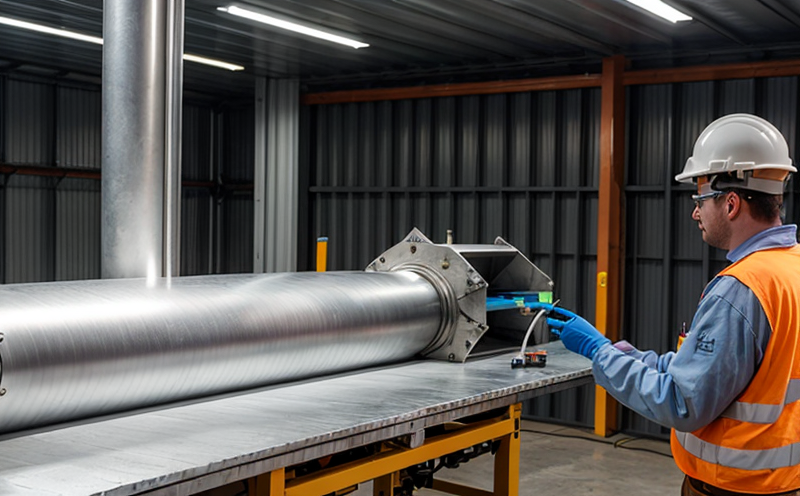ASTM G155 Xenon Arc Weathering Testing of Renewable Polymers
The ASTM G155 standard is a widely recognized method used to determine the resistance of materials, including renewable polymers, to weathering effects such as sunlight, ultraviolet light, oxygen, and moisture. This testing protocol employs xenon arc lamps that simulate the entire solar spectrum, providing an accelerated aging test for materials in a laboratory setting.
The importance of this type of testing lies in its ability to predict how renewable polymers will perform over their intended service life under real-world environmental conditions. By using ASTM G155, manufacturers can ensure that their products maintain their integrity and functionality even after prolonged exposure to harsh weather elements. This is particularly critical for renewable energy applications where materials must withstand the rigors of outdoor environments without degrading.
The testing process involves subjecting samples of the polymer to controlled conditions in a chamber equipped with xenon arc lamps that emit light similar to direct sunlight but at an accelerated rate. The specimens are exposed to various combinations of temperature, humidity, and ultraviolet radiation to mimic different environmental stresses. This allows for rapid evaluation of material properties such as colorfastness, mechanical strength, flexibility, and chemical resistance.
For renewable polymers, this testing is crucial because these materials must meet stringent durability requirements while being sustainable alternatives to traditional fossil fuel-based materials. The results from ASTM G155 testing provide valuable insights into the long-term performance of these materials in various applications within renewable energy systems, ensuring that they can withstand extreme weather conditions without compromising safety or efficiency.
Understanding the nuances of ASTM G155 requires knowledge about specific parameters like exposure time, temperature cycling, and humidity levels. These factors are critical in accurately replicating real-world weathering effects on polymers used in renewable energy projects. Proper sample preparation is also essential; this includes selecting appropriate specimens that represent the intended end-use product or component.
Accurate reporting of test results is equally important for compliance and quality assurance purposes. Reporting should include detailed information about the exposure conditions, duration, type of polymer tested, observed changes in physical properties, and any other relevant data points. Compliance with international standards such as ASTM G155 helps ensure that products meet regulatory requirements and industry expectations.
By leveraging ASTM G155 testing, manufacturers can gain confidence in their renewable polymer formulations, reducing risks associated with premature failure or degradation due to environmental exposure. This not only enhances product reliability but also supports sustainability goals by promoting the use of eco-friendly materials.
Benefits
- Evaluate material performance under accelerated weathering conditions
- Predict long-term durability and reliability of renewable polymer components
- Ensure compliance with international standards for quality assurance
- Rapidly identify potential issues in polymer formulations before commercial release
Customer Impact and Satisfaction
The implementation of ASTM G155 testing enhances customer satisfaction by delivering high-quality, reliable products that meet strict environmental requirements. By using this standardized method, manufacturers demonstrate their commitment to sustainability and durability, which are increasingly important factors for end-users in the renewable energy sector.
Customers benefit from knowing that the materials they purchase have undergone rigorous testing to ensure longevity and performance under challenging conditions. This transparency builds trust between suppliers and buyers, fostering stronger relationships based on shared values of quality and responsibility towards the environment.
In addition, successful ASTM G155 testing can lead to increased market share as customers choose suppliers who provide evidence of robust product development practices. It also opens doors for new markets where stringent regulatory standards exist, allowing companies that comply with ASTM G155 to compete more effectively globally.
International Acceptance and Recognition
The ASTM G155 standard enjoys widespread acceptance across numerous countries due to its comprehensive approach to simulating real-world weathering effects. Many national standards organizations have adopted ASTM G155 as a recommended practice or reference method for evaluating the durability of materials used in various industries, including renewable energy.
For example, the European Committee for Standardization (CEN) and International Electrotechnical Commission (IEC) both recommend using ASTM G155 for assessing photodegradation resistance in plastics intended for outdoor applications. Similarly, standards bodies like the American Society for Testing and Materials (ASTM), which developed the original standard, continue to update it based on new research findings.
International acceptance of ASTM G155 underscores its relevance not only within individual nations but also globally. Organizations involved in international trade recognize that adherence to such internationally recognized standards enhances interoperability between different national markets and promotes fair competition among global players.





